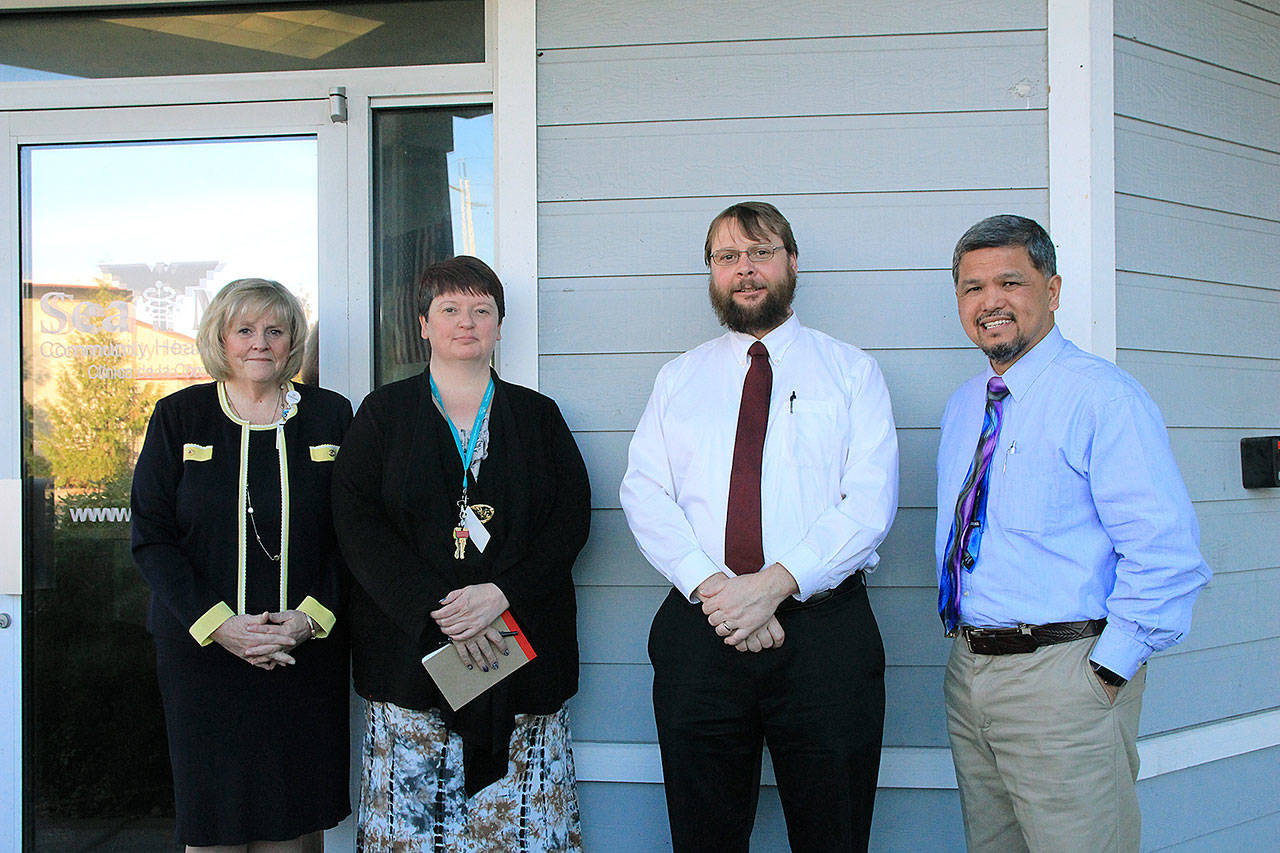There’s been more awareness of the opioid crisis in the last couple of years, but there are still Whidbey residents battling addiction to prescription and illicit drugs.
In the first half of 2019, there were at least 12 cases of patient opioid use or polysubstance abuse identified at WhidbeyHealth Medical Center and there were seven documented instances of withdrawal symptoms. Without access to certain opioid withdrawal medications, those patients’ chances of successful and sustainable recovery are slim.
Availability of medication assisted treatment, called MAT, in Island County is limited to the jail and one office in Oak Harbor. The Whidbey Island Public Hospital District is working with Sea Mar Community Health Centers to provide the service on the island. The program is expected to begin in December, said Linda Gipson, WhidbeyHealth chief quality officer.
The treatment’s effectiveness is also usually hinged on its use in conjunction with wrap-around behavioral health services, according to Charles Watras, medication treatment program director at Sea Mar. The community health center has an Oak Harbor office that provides outpatient chemical dependency services, but it doesn’t have primary care or other types of health care.
On the other hand, WhidbeyHealth can provide the other services at its clinics but its providers don’t necessarily have the chemical dependency treatment expertise.
“We have all these patients that need care,” said Gipson, “and they have the clinical expertise to provide the care.”
The goal is to have two people at each WhidbeyHealth setting that have a deep understanding of the program that can help other staff. Eventually, there will be people in the hospital’s emergency department who can provide the first doses of medication until the patient goes to Sea Mar.
Quitting opioids cold turkey can be dangerous, lead to stronger cravings and increase risk of using again, according to the American Society of Addiction Medicine.
Medications, such as Suboxone or Vivitrol, block opioid receptors in the brain to reduce cravings and withdrawal symptoms without creating a euphoric effect.
At Sea Mar, a specially trained registered nurse would screen patients for opioid substance use disorder and, if appropriate for the program, transition them into treatment with counseling, group therapy and varying levels of outpatient care.
For some, the issue might be rooted in a chronic pain condition, which would require different treatment, Gipson said.
Medication would be provided in short intervals at first, Watras said, to ensure the patient keeps coming in and is staying up-to-date on treatment.
As people stabilize, they will receive larger doses to be taken over longer intervals of time. Sea Mar’s patient records and systems would be able to transfer information to WhidbeyHealth to inform physical health care decisions, said Gipson.
“It really has to be a holistic approach,” said Gipson.
Sea Mar received a three-year grant from the Substance Abuse and Mental Health Services Administration, which will fully fund a nurse care manager for the program, said Watras.
The organization is working to make the position sustainable after the grant period is complete, he said.
To try and avoid development of opioid use disorder, Gipson said the hospital in the last 18 months has increased training and changed practices to limit the amount of narcotics prescribed for pain. This aspect, said Watras, is key to addressing the systemic problem.
“Education has been a huge element for our providers” said Watras.
“We’re really changing the culture for how we view and treat pain as well as educating people on treatment and opioid use disorder.”



